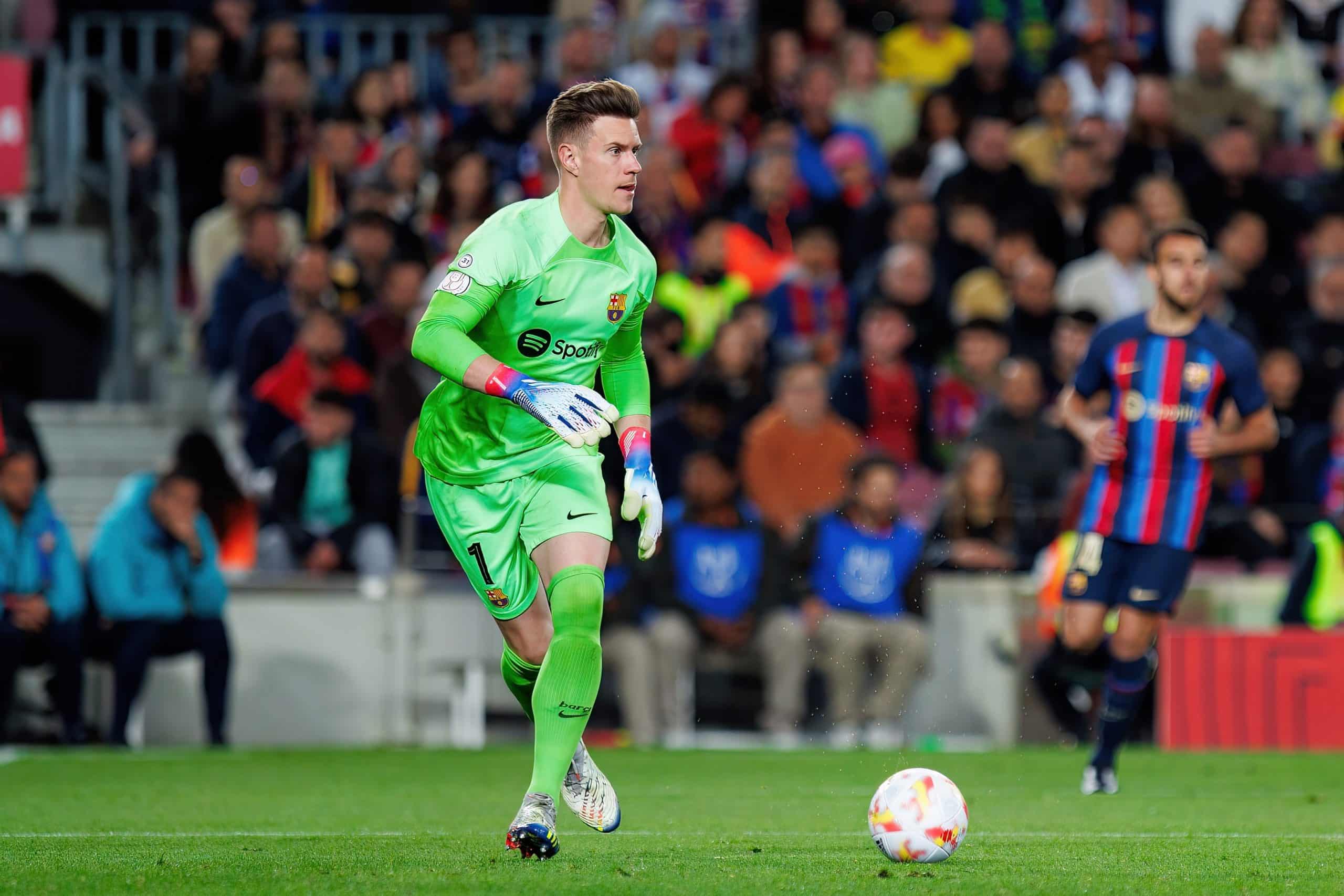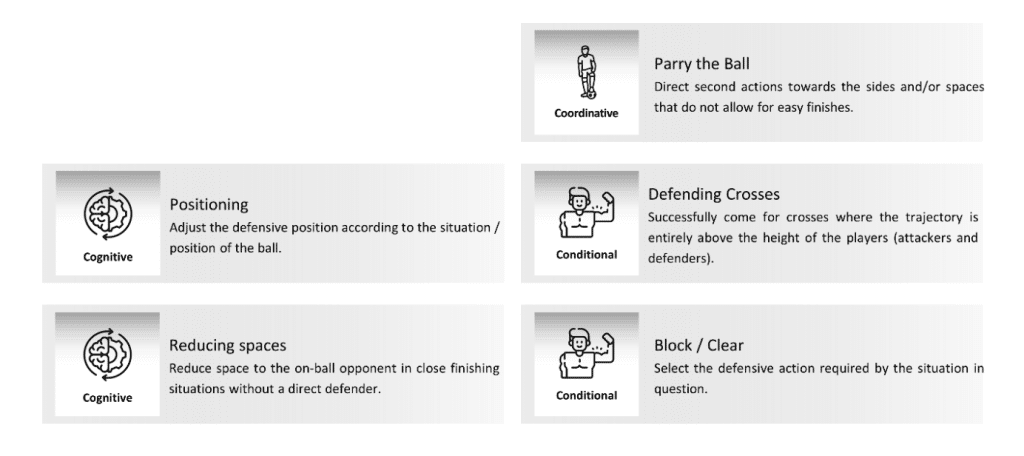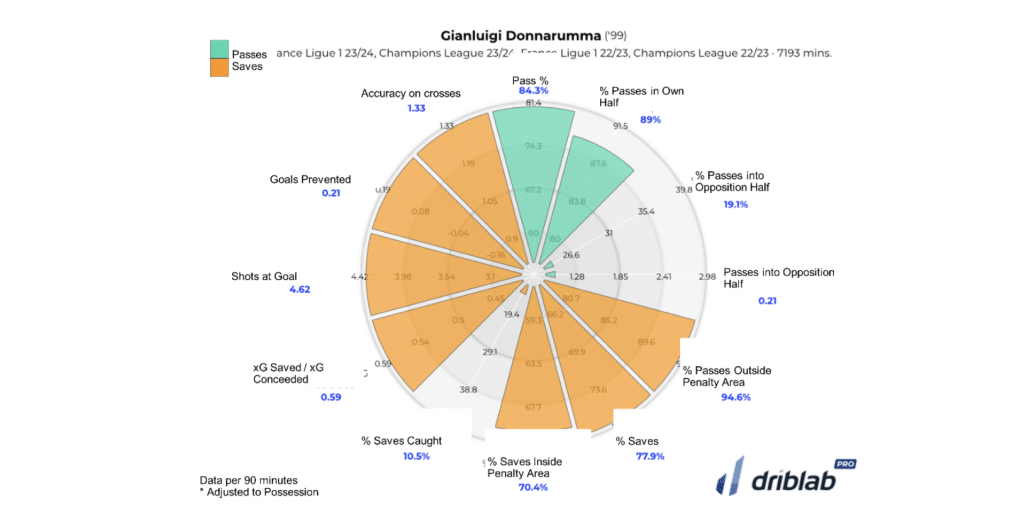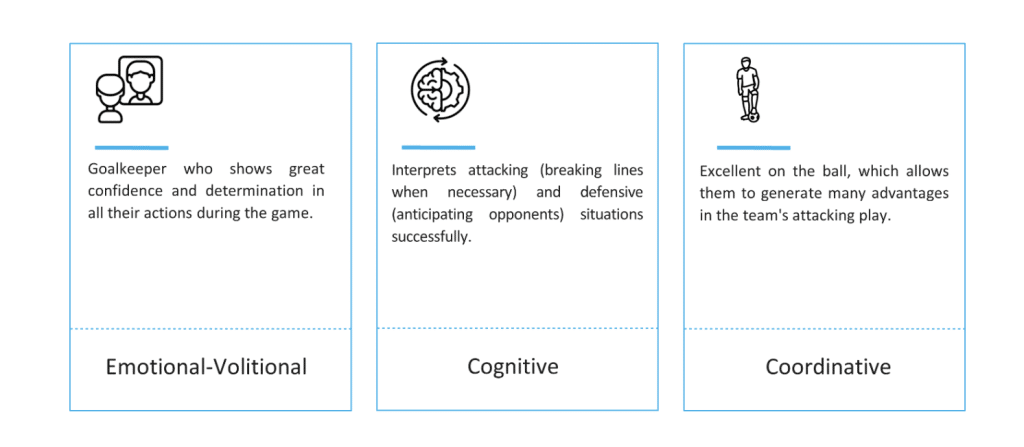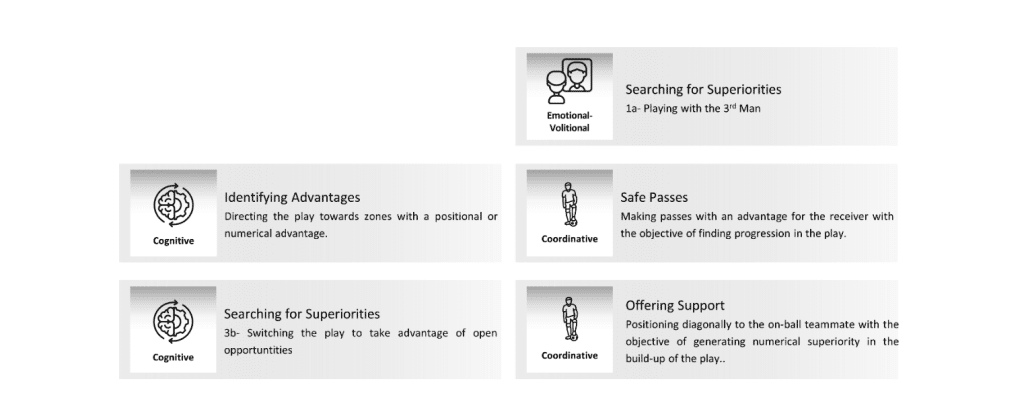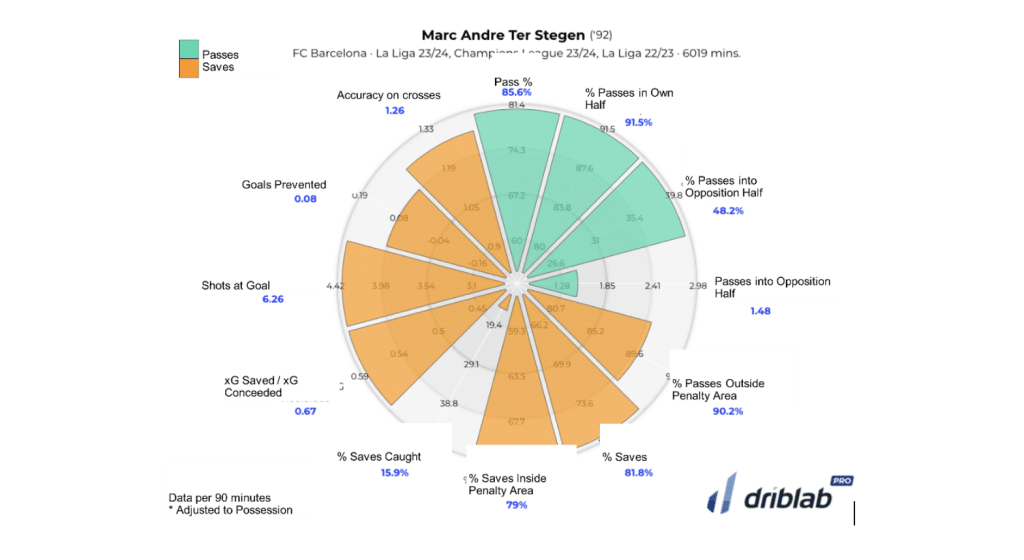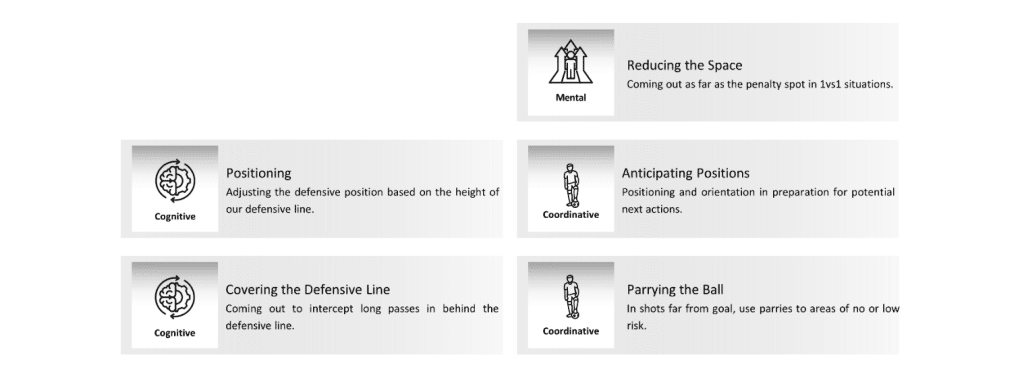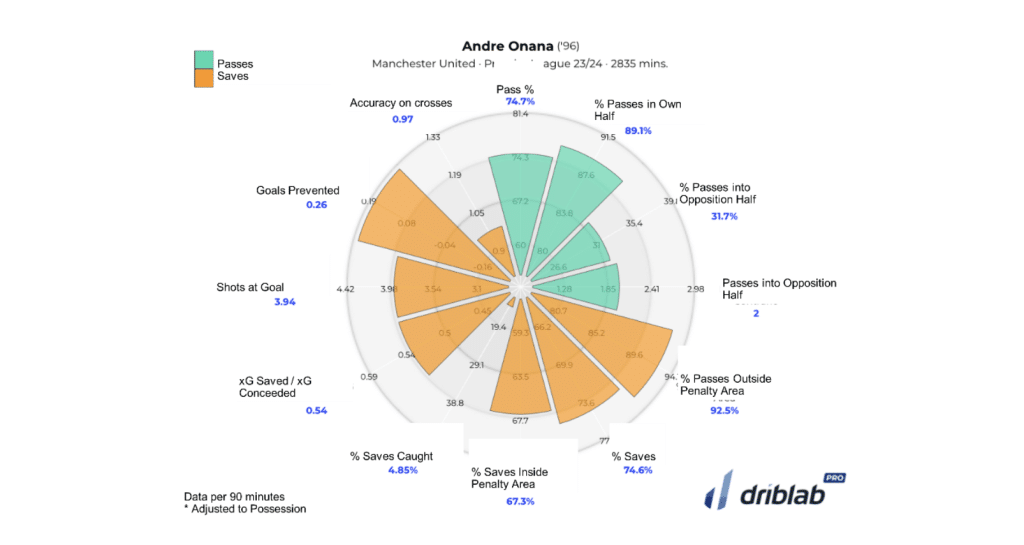The goalkeeper is one of the positions that has evolved the most in recent times. It is no longer enough to be agile between the sticks, as many teams require their goalkeeper to be competent with the ball at their feet or to act as a defender behind the defensive line, coming out from their goal. In this blog,we will show you the different goalkeeper profiles we can find today, as well as the main characteristics of each one.
1. The Defensive Goalkeeper
This goalkeeper profile stands out for their physique, with a considerable height and a great command of the area. In addition, they have great agility in their motor repertoire to defend the goal, for which the following structures stand out:

Therefore, the main behaviours that this goalkeeper profile must master in relation to the aforementioned structures are:
They are goalkeeper profiles that are highlighted for their effectiveness in saves and in most defensive records such as xG saved, xG conceded, goals saved and percentage of saves inside the area.
On the other hand, in attack, their metrics are not so prominent, having lower percentages in participation: short passes and passes in the opponent’s field. Some goalkeepers with this profile are Donnaruma (PSG), Oblak (Atlético de Madrid), Alisson Becker (Liverpool) or Thibaut Curtois (Real Madrid).
Image 1. Radar on Gianluigi Donnarumma’s actions during the 22/23 and 23/24 seasons in Ligue 1 and Champions League. Source: Driblab
2. The Attacking Goalkeeper
This goalkeeper profile is known for their ability on the ball and reading of the attacking phase, being an additional attacker for the team. Therefore, we highlight the following structures:
With this in mind, this type of goalkeeper should master the following behaviours:
Normally, these goalkeepers are characterised by their attacking ability, being involved in the build-up of the team’s play. They have the ability to play short, but also long into the opposition half.
Image 2. Radar on Marc André Ter Stegen’s actions during the 23/24 Champions League and the 22/23 La Liga. Source: Driblab
Examples of attacking goalkeepers are Marc André Ter Stegen (FC Barcelona) and Ederson Moraes (Manchester City), both of whom are great with the ball at their feet, and have the ability to start their team’s attacking moves.
3. The Sweeper Goalkeeper
This profile of a goalkeeper plays forward, ready to defend balls into space and is very determined in their actions, both in attack and defence. His main structures are:
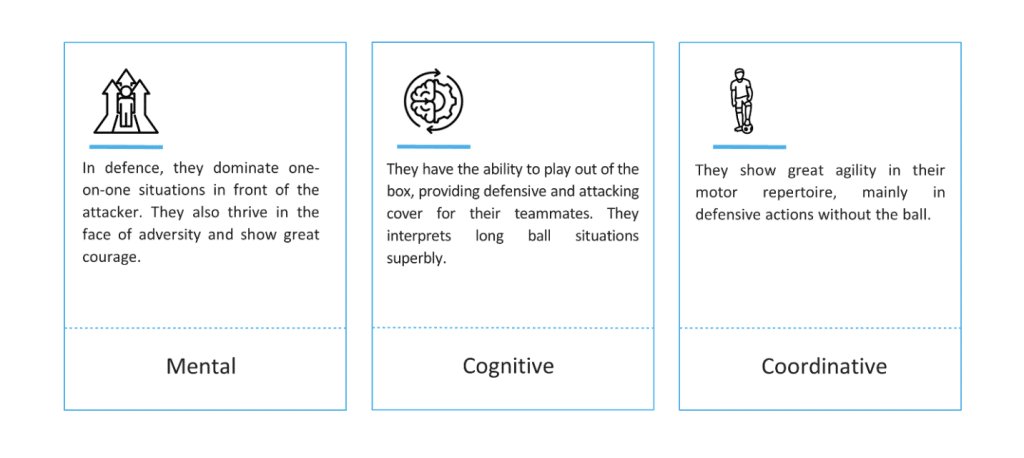
Unlike the profiles described previously, these are goalkeeper profiles that stand out more for their interventions away from goal. For this reason, they have a higher percentage of saves outside the box than inside it.
Image 3. Radar on the actions of André Onana during the 23/24 Premier League. Source: Driblab
Some sweeper-keeper goalkeepers include André Onana (Manchester United), Unai Simón (Athletic Club), Iñaki Peña (FC Barcelona), and David Raya (Arsenal FC).
It is clear, then, that depending on the team’s playing style, one type of goalkeeper profile will fit better than another, as they must enhance the team’s playing principles to achieve the best possible performance in competition. And you, which profile do you think suits your playing style better? Leave us your comment.
Do you want to learn more about Individual Fundamentals by Position?
The ‘Specialist in Individual Fundamentals by Position’ course will allow you to study in depth the more than 90 individual fundamentals by player position. All these fundamentals are the result of an exhaustive study of each and every one of the most common and relevant situations in which each player finds themselves in during a match depending on their position on the pitch. Once these situations in the game have been identified, we study which are the optimal responses that give the player the best chance of success.

